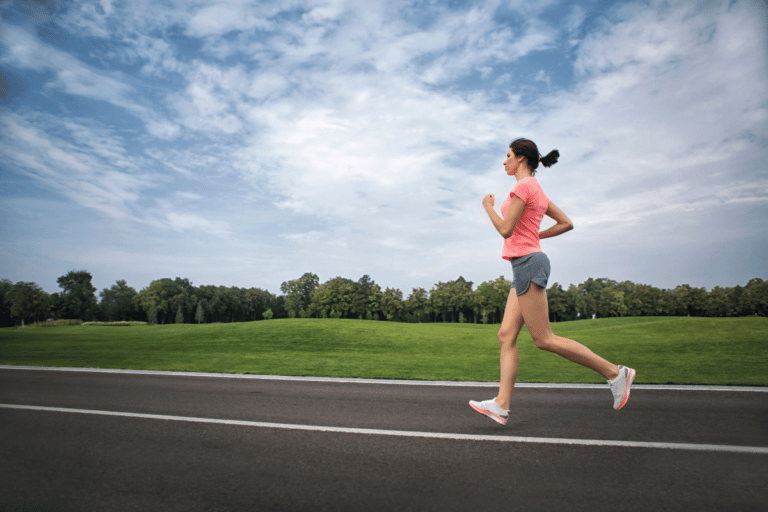Daydreaming While Running (Is it Maladaptive or Positive?)
While running, do you ever find yourself miles down the road from the last place you consciously remember being? Perhaps you’ve been daydreaming about responsibilities or future goals. This phenomenon appears to be common for long-distance runners, but is it maladaptive or positive? Should you daydream while running?
Daydreaming while running is common among long-distance runners and can be a positive practice. Daydreaming can reduce stress, promote creativity, and provide a distraction from the normal aches and pains of running. Runners should be sure, however, to avoid daydreaming when running in dangerous locations like busy streets or steep mountain trails.
Continue below to learn about the various pros and cons of daydreaming while running.
Is it okay to daydream while you run?
Repetitive tasks such as running allow our minds to take a break from the constant focus required for most tasks. This is due to the ability of the brain to develop unconscious habits, often referred to as “muscle memory.” When our body goes on autopilot in this way, we are able to use our cognitive faculties for other things. This idleness of the mind may sometimes lead to daydreaming.
Daydreaming in general has been proven to have many positive effects on mental health and achievement. When running, daydreaming can help distract you from the repetition, exhaustion, and even discomfort that comes from long-distance running. As long as you remain aware of your surroundings (especially when running on the road), daydreaming should be perfectly safe.
Daydreaming can help reduce stress and anxiety. It can also promote creative thinking and problem-solving.
In fact, it has been theorized that unconscious motion can actually positively impact the thinking process. Researchers have attempted to link exercise to thought development in the past, but so far, results have been inconclusive.
Famously, Albert Einstein is said to have developed his theory of relativity while riding his bicycle. Perhaps on your next run, your daydreams will provide humanity with the insights we need to solve world hunger or reverse global warming!
What is trance running?
Trance running, or what some might refer to as “flow state” running, is a state of mental and physical being in which one has reached a certain peak level of performance.
In this state, there will be little to no dissonance between the runner’s will and his performance. Everything will seem easy to the runner, and he/she will feel like they’re “in the zone.” This state of being is the subject of many books and talks on productivity, but in the context of running and exercise, the state is just as desirable.
In order to enter this trance – or flow – state, runners should begin with mindfulness during their warm-up. This may require pre-visualization of the tasks the runner will be facing during the exercise. Next, during the activity, runners should be aiming for a specified goal, such as a certain mile pace.
These factors should increase the likelihood of entering into a trance-like running state. While this state is different from daydreaming, it will produce a similar effect of making the run seem effortless and brief.
What is maladaptive daydreaming?
Maladaptive daydreaming is an unofficial medical diagnosis linked to negative mental health habits.
Patients who suffer from maladaptive daydreaming become lost in extremely complex daydreams that are used as coping mechanisms for other mental health issues or traumatic circumstances. There seems to be a strong link between maladaptive daydreaming and ADHD, which suggests some relationship between this type of daydreaming and a desire for constant motion.
So far, there is no strong evidence of runners displaying this type of behavior en masse, but some of the necessary components for integrating these bad habits are there. If you find your running daydreams becoming too complex and difficult to return from, speak with a licensed therapist and try practicing mindfulness meditation and other forms of grounding exercises before and after runs.
Potential benefits of daydreaming while running
Though there might be harmful forms of daydreaming, overall, the practice can be extremely beneficial. This is especially true when paired with another positive practice such as exercise.
Here are a few potential benefits of daydreaming while running:
- Reduced stress & anxiety
- Increased creativity
- Improved self-concept
- Wiser decision making
- Better goals
Let’s look into these and see how daydreaming while running can actually be good for you.
Reduced stress & anxiety
Despite its negative associations, daydreaming can have many positive psychological benefits.
Chiefly, it can help us deal with our stress and anxiety. One of the ways it does this is by giving us the dexterity to invent new approaches to the problems that are causing our negative emotions.
When we have time to daydream, we are often able to develop a plan of action to attack the things that weigh us down. Without this important planning phase, the problems we face can become overwhelming. When combined with running, daydreaming can be even more fruitful.
Exercise, such as running can increase the levels of endocannabinoids in the bloodstream, which have been linked to improved moods. These combined practices can greatly improve stress and anxiety levels.
Increased creativity
Another benefit of daydreaming while running could be an increase in creativity. Daydreaming is positively correlated with “outside of the box” thinking.
Since running offers the perfect environment for non-task thinking, it should have a positive impact on creative thought.
Improved self-concept
Running while daydreaming can also improve your self-concept.
Positive, constructive daydreaming is linked to higher reported feelings of “authentic living,” and fewer reported feelings of self-alienation.
Consistent exercise may also help improve self-concept, as you begin to meet fitness and physique goals that you have set for yourself.
Wiser decision making
Having time to think about your life in the form of daydreaming on runs may also improve your decision-making.
Making wise decisions requires time to reflect and consider a decision from many different angles. Without the space to think about problems in this manner, rash decisions can be made.
Better goals
Creating the space to daydream while running can also help you set better goals for yourself.
In addition to providing space for more reflective decision-making, goal setting requires time to mentally assess the relative value of various potential goals. Without this reflection time, the goals that you may set can be shallow or irrelevant.
Instead, daydreaming while running can provide a reflective time to sort through the pros and cons of each goal you set.
Potential problems when daydreaming while running
Of course, like daydreaming while driving, daydreaming while running can have a number of drawbacks, many of them having to do with runner safety.
Runners who are not fully focused on the task at hand are less likely to have the appropriate amount of situational awareness required to avoid dangerous or adverse situations.
For example, a daydreaming runner may not fully discern the proximity of an on-coming vehicle or stationary object. This lack of awareness could lead to serious injury in some situations.
Other risks could involve an unconscious and improper running gait or posture, which, if not addressed over time, could lead to injury. In most cases, daydreaming while running is perfectly safe, but runners who find themselves in a dangerous, dynamic environment should try to pay attention to their surroundings.






